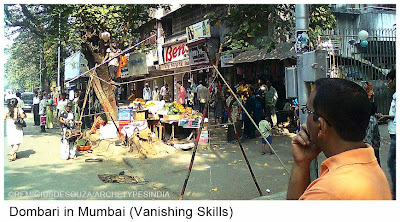 |
| Water lettuce: Drawing by Remigius de Souza |
I was travelling through the jungles of Dangs in Gujarat. From there I went to the project site of Ukai Dam on River Tapi, which was then under construction. On the way I halted at village Songad. There is a temple and water reservoir on the top of the hill near the village. The water was covered with a floating aquatic plant. It is called water lettuce (Pistia stratiotes), ‘Prasni’ in Marathi, ‘Jalkumbhi’ in Hindi, ‘Jalshamkhala’ in Gujarati.
The plant grows by multiplying in numbers like amoeba, and each grows to full size. The plant has shape and size of rose flower with roots at the base. Its petals are green – a green rosette of outstanding beauty.
A tribal just then reached at the pond. He had walked about fifteen ‘kose’ (one kose is about three miles) to take the plant for medicine for his daughter who had just delivered. I too fetched a few plants to Baroda while returning, to leave them in one of the many lakes there. I left them in a bucketful of water on the terrace. They remained there. In the course of time the number did increase, but their size reduced – it was miniaturised – and finally disappeared completely (probably it was not getting direct sunlight).
After a few years, I found this plant (very few in numbers) in a large pond in village at Vasai Taluka.
The aquatic weeds were considered nuisance till recently. They help aquatic ecosystems and recycle waste, reduce evaporation of water. Different types contain protein and amino acids as regards lysine and methionine. They also contain various degrees of minerals depending upon location and season. They are often richer in iron, calcium and potassium than land forages. Aquatic plants could be used as soil additives, mulch, fertiliser, green manure, pulp and fibre for papermaking, animal and human feed, and medicines (best known to the tribal for centuries), organic malts for biogas production and for composting.
 |
| Image source: Internet |
There is lot of information about this plant on the Internet. Some claims are made about the origin of the in some country or other.
Once in geological time, scientists say, there was a super-continent, which is named Gondwanaland. It was fragmented, and five continents floated across oceans.
Obviously along with land, the flora too must have moved; common sense. The scientists found fossilized plants in Antarctica, which proved it was part of Gondwanaland, the super continent.
Google Map:
Songadh, Surat District, Gujarat
~ ~ ~ ~ ~
© Remigius de Souza. All rights reserved.






